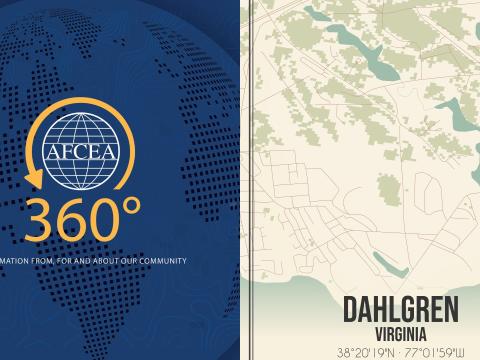Reserve SEAL Teams to Enhance Experimentation
Rear Adm Hugh Wyman Howard III, USN, commander, Navy Special Warfare Command, made the case today that keeping a combat-ready active-duty force in reserve for combat or contingency operations around the world will provide opportunities for greater experimentation with tactics, techniques and procedures.
“[We’re] very focused now on the fleets, key operational problems, and how we can be distinctive in providing support to the fleet in the strategic competition continuum but also in crisis and conflict ... .”—RADM Wyman Howard, USN, cdr, NSWC#WEST2021
— George Seffers (pronounced See furs) (@gseffers) June 29, 2021
Adm. Howard made the comments during the 2021 West virtual conference co-sponsored by AFCEA and the U.S. Naval Institute.
The idea is to hold approximately one-third of the mission ready force in reserve to deploy when needed while the command explores new operational concepts. After 20 years of combating terrorism and focusing heavily on countering improvised explosive devices, the Naval Special Warfare Command seeks to reorganize to better prepare for peer and near-peer adversaries, such as Russia and China. The effort includes going from eight SEAL Teams to six subordinate SEAL platoons with the addition of a third maneuver element within each.
“We’re looking at how we constitute a reserve as well at our highest level of readiness. You think about an operational readiness cycle, and you get to the point of combat ready. We see opportunity there to establish a reserve at combat ready to experiment for step changes in capability and development of new tactics at lower training risk,” Adm. Howard said.
“We see opportunity there to establish a reserve at combat ready to experiment for step changes in capability and development of new tactics at lower training risk.”— RADM Wyman Howard, USN, cdr, Navy Special Warfare Command#WEST2021
— George Seffers (pronounced See furs) (@gseffers) June 29, 2021
The commander suggested the move will accelerate experimentation. “For a very uncertain future, we have to learn faster,” he declared. “A reserve will allow us to learn faster at lower training risk, as I said, and then provide that agility to globally deploy for purpose [and to] solve problems that we can’t see through the way that our forces are currently allocated. That reserve concept is really important to us.”
Although changes are underway, the SEALs are not abandoning their roots. “We’re the Navy’s commandos. That’s what we are. We understand our roots,” Adm. Howard stated.
“We’re the Navy’s commandos. That’s what we are. We understand our roots.” — RADM Wyman Howard, USN, cdr, NSWC#WEST2021
— George Seffers (pronounced See furs) (@gseffers) June 29, 2021
Evolution, however, is a must. “For us, it’s a race for relevancy and showing up in a way that makes the fleet more survivable and more lethal,” he added.
The transformation will be informed by lessons learned in Afghanistan and Iraq. “We’re taking the lessons learned from very intense counter-violent extremist organization missions, counter-terrorism missions over the last 20 years and applying those lessons—the way we mission plan, the way that we rehearse, the way that we integrate with the joint force—to solve new problems, Adm. Howard said. “And [we’re] very focused now on the fleets, key operational problems, and how we can be distinctive in providing support to the fleet in the strategic competition continuum but also in crisis and conflict as an important insight for us in the Navy.”




Comments